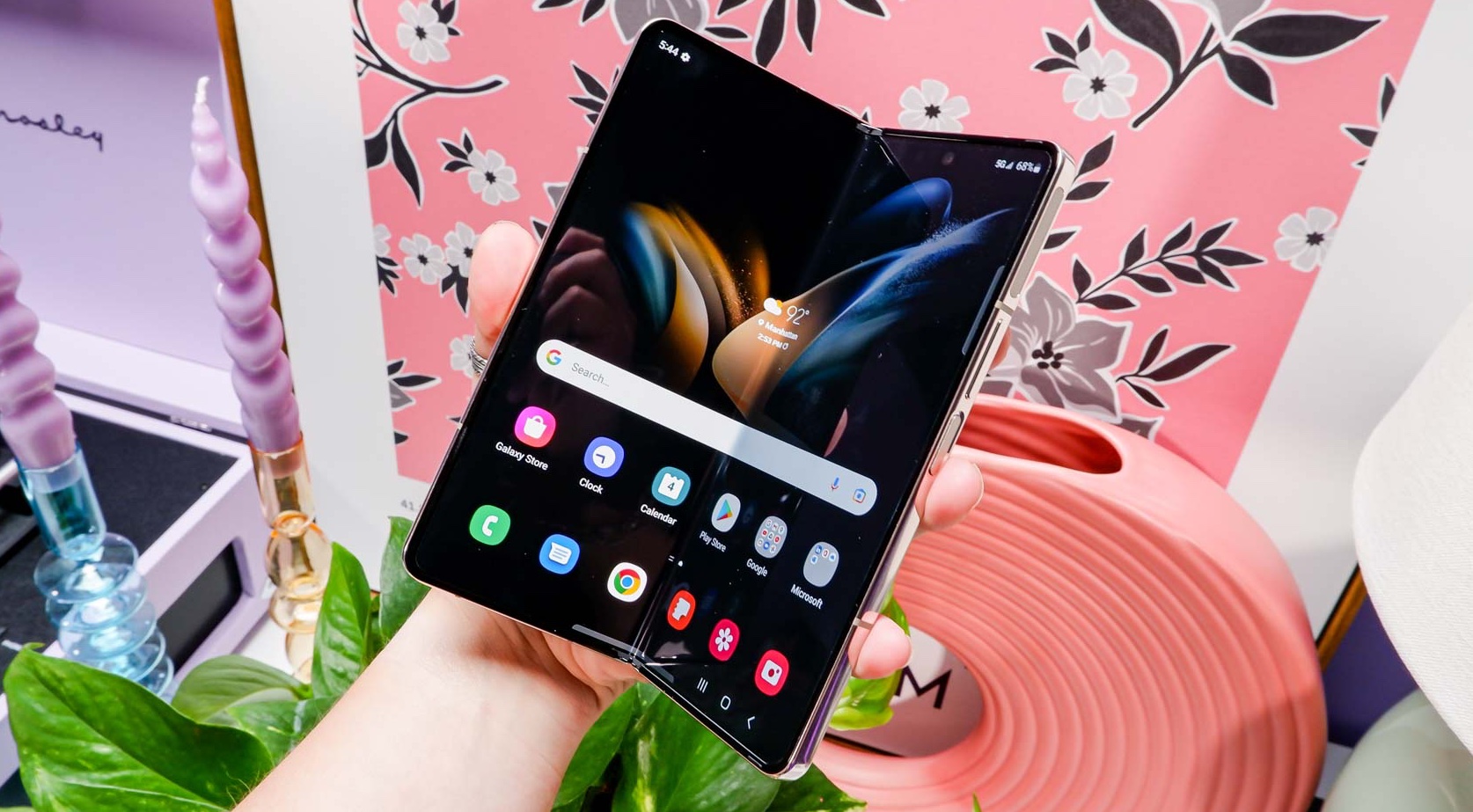Samsung Galaxy Z Fold 4's upgrades are a big letdown — here’s why

Galaxy Z Fold 4
(Image credit: Future)Foldable phones started to really make an impression on me with the Samsung Galaxy Z Fold 3. While clunky, it made for a great productivity device while on the move, and there’s just something satisfying about folding it out to get more screen space then snapping it shut when you’re done with it.
In fact, it’s basically my second phone after the iPhone 13 Pro — that gained my attention after an Android to iPhone switch some 9 months ago.
So I had high hopes for the Samsung Galaxy Z Fold 4 and Galaxy Z Flip 4. After three generations of improvements and iteration, I’d crossed my fingers a pair of foldable phones that really did something different and set a new standard for foldable phones to reach for.
But after the reveal at the Samsung Unpacked event, it became clear that the latest Galaxy foldables were not the phones I was hoping for.
Not a bold Fold

Now don’t get me wrong. The improvements to the Galaxy Z Fold 4 — including the improved main 50MP camera, slimmer display bezels and lighter design — are appreciated. But I’d be hard pressed to spot a Fold 4 from a Fold 3 at a glance. The same is true of the Flip 4, though as that’s only on its third iteration I wasn’t expecting a major change beyond a few tweaks and a new chip.
And I’m fairly convinced from our Galaxy Z Fold 4 review in progress and Galaxy Z Flip 4 review in progress, that both phones will make it on, if not top of, our best foldable phone list. But am I jonesing for one? Having given it a brief try, no.
I simply don’t think the Galaxy Z Fold 4 brings enough to the table to make it a worthy upgrade from the Fold 3. Now, I understand phone upgrade cycles tend to span two to three years, but even so, I’d have expected the Galaxy Fold line to have matured enough for the fourth-gen model to really step things up for foldables.
Get instant access to breaking news, the hottest reviews, great deals and helpful tips.
I was hoping for an even more compact hinge, some serious slimming down to reduce how bulky the Fold phones feel in a pocket or bag, and perhaps some clever design to remove a camera module. And while I get Fold phones are do-everything devices, I’m sure Samsung could have gotten away with saving some space by, say, removing the front facing camera on the “cover” display — especially when you can use the rear cameras for selfie snapping.
Aside from some external changes, I’d like to see Samsung do more with the internals. Sure, the Snapdragon 8 Plus Gen 1 is the fastest slice of Qualcomm silicon around. But I’d have loved to see Samsung have produced its own chip for the Fold 4, say tapping into its partnership with AMD, not least because it has its Exynos line of mobile chips. Such a chip could not only deliver extra power but perhaps more offer features that work specifically for foldable devices. Or Samsung could deliver a chipset that may require less cooling and thus take up less chassis space, leading to a slimmer phone.
The same is true of the software. The Galaxy Z Fold 4 will be the first foldable phone to have Android 12L, and it does have some slick foldable-centric features like a custom taskbar for rapid multitasking. But I’m still not fully convinced Android is quite there yet to deliver a great tablet-style experience, even with Samsung’s refinements.
Foldables need to flip expectations or go home

So what’s my answer to this? Well I feel Samsung could have held off releasing the Galaxy Z Fold 4, and even the Galaxy Z Flip 4, until the technology is there to make a real difference.
As much as foldables are part of the smartphone conversation, I still feel they are too pricey and have too many compromises to be mainstream yet.
Samsung did this with the Note line, effectively replacing it with the stellar Galaxy S22 Ultra. And in the face of other upcoming foldable phones like the Xiaomi Mix Fold 2, which appears to be notably thinner than the Fold 4, I feel Samsung can’t argue that there's room for improvement.
This whole conceit felt particularly pertinent when at a press briefing Samsung told me and other tech journalists how it recycled a lot materials and took a green approach to its devices; I turned to a friend and observed that the greenest approach could be to not make a phone that offers but minor upgrades over its predecessor.
As much as foldables are part of the smartphone conversation, I still feel they are too pricey and have too many compromises to be mainstream yet. And I think it’s far too early for this newer form of smartphone to simply go into the increasingly dull iterative cycles of standard phones.
So I want to see foldable phones really evolve with each generation, even if that means waiting for two years to pass. Without some major steps I can't see even the best foldable phones becoming devices you’ll regularly see being used out in the wild.

Roland Moore-Colyer a Managing Editor at Tom’s Guide with a focus on news, features and opinion articles. He often writes about gaming, phones, laptops and other bits of hardware; he’s also got an interest in cars. When not at his desk Roland can be found wandering around London, often with a look of curiosity on his face.
